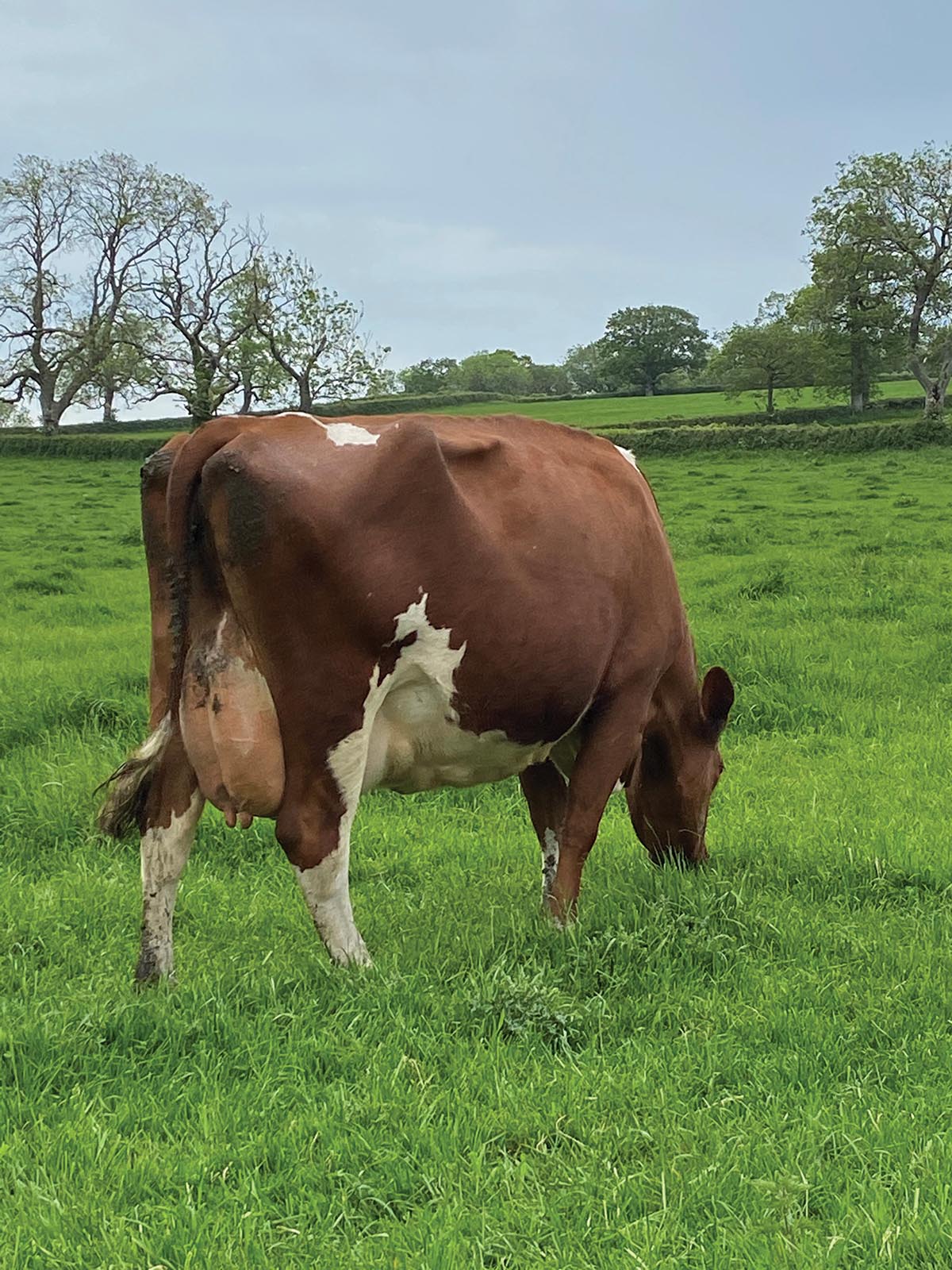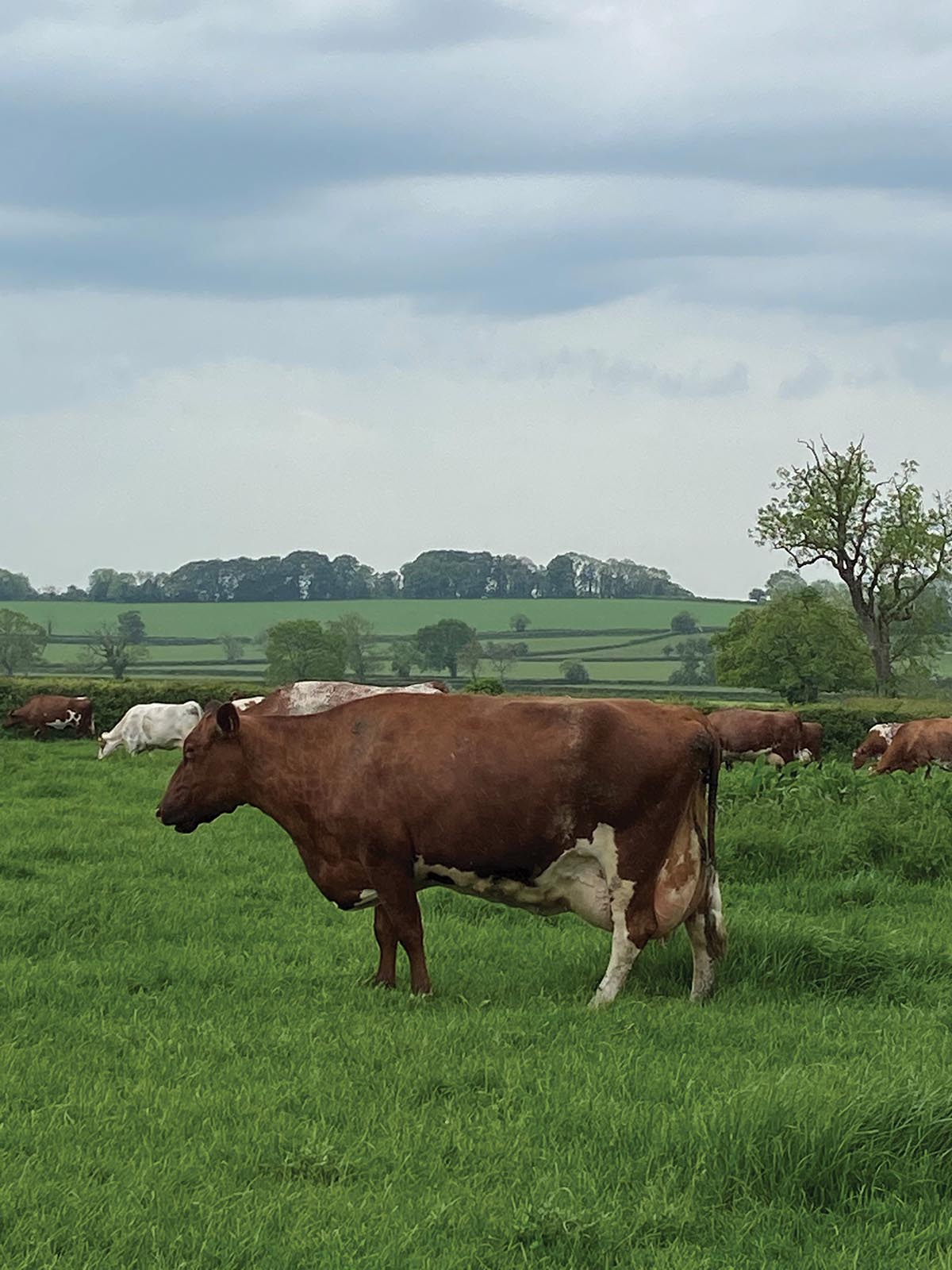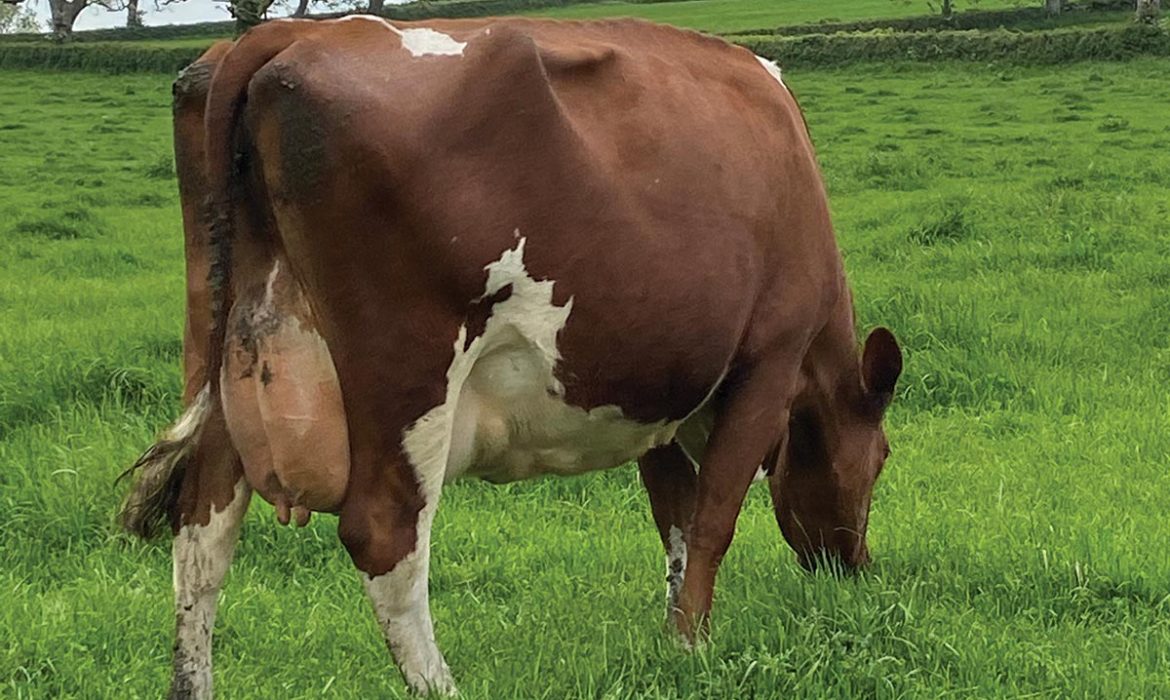Kevin and Pam Moorse farm in Sherborne, Dorset having taken over the family farm back in 1994. “My father milked twenty cows until I left school; he then doubled the flying herd to forty. I always wanted to farm, there was never any doubt. When dad retired, we started with thirty cows and gradually increased numbers over the years. We felt that seventy-five cows was plenty to be able to do the work ourselves.” Kevin is the third and final generation to farm on the family farm. The farm has always been dairy, “running a simple system with the most economical and sustainable breed – the Dairy Shorthorn.”
The system is a grazing one, with big bale silage fed in the winter with sugar beet and a ton of nuts per cow. Milk is sold to Barbers Cheese and the contract stipulates that the cows have to graze for an extended period, which is how the farm is run regardless. There are 150 suppliers and the Moorses are constantly in the top 50 suppliers, paid on butterfat and protein. “We are fortunate with our milk contract, as Barbers are top of the league for producers, paying a fair price to suppliers.” Milking takes roughly an hour and a half through a 6 abreast parlour. In the winter the cows are housed in cubicles. The dry cows and milkers are kept together until a cow is close to calving and then she is put into the maternity field which is close to the house. Everything is done with simplicity in mind.
Shorthorns have always been present at Clare Farm. Wick Williams used to buy from Leek and Beeston and then sell in Frome Market, which is how foundation animals entered the herd. The Weaverdale and Tonelea Dispersal Sales were also instrumental in the development of the Horethorne herd. In fact, Arthur Whittle’s sale was the catalyst to go pedigree, as Kevin bought half a dozen and they flourished. Proving that Shorthorns adapt and suit any system, they transitioned with ease. “Shorthorns were just the obvious choice for us. They suit the farm and our system, they have terrific ease of management, they handle the tracks to the fields and show tremendous longevity and wonderful temperament.”
All of this was evident when we walked into the grazing milkers as they hopped, skipped and jumped to be greeted by Kevin, Pam and myself. The cows all have individual names here, although their pedigrees can trace their ancestry. They are truly treated like pets each with their own story. What stood out most amongst this red white and roan army was the age of the cows amongst the herd, with senior cows looking youthful and set to continue for many more lactations. One cow that was quick to catch the eye was Strickley Fill Pail 11th by Strickley Perfect Ten, currently milking in her 8th lactation.
She was a tremendous dairy cow with phenomenal capacity. Another notable cow was Horethorne Polly by Nejay Prince 4th, milking in her 3rd lactation with outstanding butterfat of 6.74% and protein of 3.09%, projected to do 7,121 litres this time.
Kevin does not push his herd by chasing production production production. He favours lifetime production, and longevity is a key breed attribute at Horethorne. This not only benefits his bottom line, but this attitude has environmental benefits, and with farming under a microscope it helps towards society’s views of the dairy sector. Longevity is a simple but effective economic model that the Moorse family sticks to. Cows depreciate in value from first calving, but the more mature cows are more profitable in terms of milk sales and feed costs. Having paid back the costs of rearing they then enter a profitable age. Depending on what age heifers are calved in, most cows do not become profitable until their second lactation.
Shockingly, in the UK the average number of lactations before culling is approximately 3.6 lactations (Hanks & Kossaibati 2019), with only 7% of farms reaching five lactations plus. The top risk factors to culling are reproductive problems, injury, feet, mastitis and low production. The removal of these problems means cows go unnoticed and stay longer. At Horethorne this is certainly the case, as 25.86% of the herd are mature cows in excess of five lactations, whilst another 18.9% of the herd are cows milking in their fourth lactation. Kevin attributes this to the breed; “their robust nature, excellent fertility and top-class health traits mean they are here to stay the long haul.”

The oldest cow in the herd is Amber Barrington Iris 139 who has done 87,000 litres and is carrying her 12th calf. She is also Kevin’s favourite! “If I could have five cows like Amber Barrington Iris that would fantastic. She is my ideal cow. I’ve never picked up her feet, she usually gets in calf first service and is a testament to the breed’s longevity. You find that with the Shorthorn breed; great fertility and very few problems”. Vet visits are rare because they are unnecessary. The herd is vaccinated for BVD, IBR and Lepto, which are required by the milk contract. The herd is also Johnes tested as calves remain on the cows; beef calves until sold at around three weeks, whilst heifers are on the cow for the initial colostrum intake, and then reared on whole milk for 12weeks. “We like to give the calves the best start in life.”
As the herd is genetically older Kevin has used sexed semen to keep top quality genetics entering the herd. The entire herd is AI’d and first service is obviously to Shorthorn. Currently in the flask is Churchroyd Pure Class (sexed), Glenbrook Queens Prince (sexed), Winbrook Brutus, Blackwood Park Butternut and Tregear Poynings Trumpeter 12. An impressive 73% hold at first service. This accounts for the increased number of heifers that have entered the herd this last year, as 32.7% of the herd are currently milking in their first lactation. Second and subsequent services are to Angus, as low replacement rates allows for these low-input but high value beef calves. The Angus calves can often top Frome Market at 3 weeks old as “Moorse’s Shorthorn cows throw belting calves” (Frome Market Report 11 June 2021).
Studies show that greenhouse emissions per unit of milk are lower with more lactations per cow, because fewer heifers need to be reared (De Vries & Marcondes 2020); a fact that Kevin seemed privy to. “I think that as farming continues forward the Shorthorn is going to become the popular choice. They are the economical choice. They are the sustainable choice. And as agriculture is being redefined in this decade, shifting away from high production towards environmental impact, I think the Shorthorn breed is the logical choice. I am just ten years ahead of the game!”

FACT FILE
- 75 cows, 65 milking and 30 followers
- Grazing season March – October
- Butterfat 4.16%
- Protein 3.42%
- Av milk yield 6,520
- Relief milker every Saturday
- Services 1.43
- 73% at first service
- 120 acres owned, 15 rented
- SSC 156

Strickley Perfect Ten

